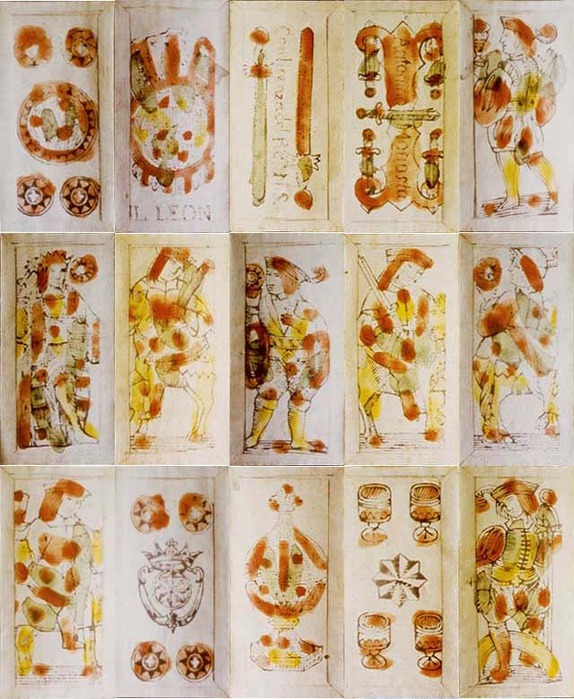OnePotato
thinbuddha said:I would argue that it is very unlikely that the same artist who carved the wood blocks would be the same person who colored all the cards. Even back in in the day before the assembly line, there would have been a division of labor.
Your idea about the spots being a negative side effect of the stenciling process is interesting. I still think that the spots are intended by the colorist.
Hullo thinbuddha.
I know it does sound like it, but I did not mean to say that one artist produced the cards. But the artist who designed the image would have directed the craftsmen that produced the finished product, and I meant to say that I don't believe he would have directed them to apply blobs of brown as decoration. The colorists did not improvise on their own. Notice how all of the elements of the final image are included in the black key block. (Except for these spots.)
To apply the color, several prints of the black key block are made. (One for each desired color.) Then, using the black line image as a guide, the holes are cut in the paper wherever you want the particular color to appear. Then the sheet is varnished for durability. Then it is used to apply its particular color with a short bristle stencil brush.
Abrac said:I'm partial to the idea that a previous owner of the original deck put them there after they left the factory. Some of the cards don't have any dots at all.....
Hullo Abrac.
There are several old decks around that have these spots, so I don't buy the "eccentric card owner" theory.
Not every card needs to have adhesive on it. A sheet would have about 10 or 12 cards on it, and you might only need to apply the stickum in 3 or 4 places. Perhaps in difficult areas.
Note how particularly neat the coloring is on the first example. Other methods of stenciling result in more color-outside-the-lines effect.
Abrac said:This doesn't appear to be random as you would expect if they were simply there to hold the stencils in place. And there are so many of them. Why would someone use 10 drops when 3 or 4 would do? It looks like someone did it intentionally with something in mind that only they will probably ever know.
I don't know how many dots of stickum were required. Maybe 3 or 4 weren't enough. Maybe it was just sticky wax? I'd use a few squirts of spray mount, and let it dry to tack, but they didn't have that.


